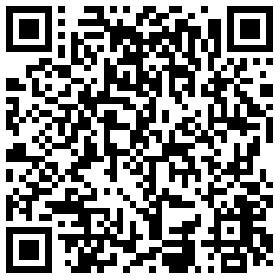By Rabi Sankar Bosu, Indian freelance contributor to Chinese media outlets

Launched in 2015, China’s future industrial initiative, “Made in China 2025” strategy, is taking the country to become one of the leading players in robotics. According to the International Federation of Robots, China is ranked No. 1 in sales for industrial robots, while the United States is ranked fourth. China's plan for the global robot industry is evidenced by the words of Chinese President Xi Jinping, “China aims to make itself a country of innovators.” And in the last five years, the way the Chinese robot industry has prospered is astounding. China’s rapid advancement in the domain of automation and artificial intelligence (AI) technology symbolizes its prowess in the robotics sector.
The recently concluded the 4th World Robot Conference (WRC) under the theme, “Creating Intelligent Momentum for a New Era of Openness and Shared Benefits” in Beijing is a clear signal to the world that China is on the right track to become a robotics powerhouse, both as buyer and seller, in line with China's national strategy of robotic and digitized manufacturing upgrades to catapult China to lead the world in AI technology by 2025.
This year's WRC had once again proven that today’s New China is not just a manufacturer, but it has the extraordinary potential of leading a new way of globalization despite unilateral protectionism adopted by Washington. And taking support from the government, many Chinese companies are developing robots with their own technological advantages that have put China at the center of robotics technology.
It's encouraging that Beijing seeks to strengthen cooperation with other countries to upgrade research and accelerate the industrialization of robot technology. As China’s minister of industry and information technology Miao Wei said in his speech at the opening ceremony of the 2018 WRC, "China, as the world's largest robot market, sincerely welcomes foreign companies to partake in the strategic opportunity to jointly build a global industrial ecosystem."
Miao Wei’s remarks reveal that China's industrial machinery and robot parts have also been included in US tariffs on $16 billion worth of Chinese goods in order to power down China’s dominance in high tech sectors such as 5G technology, Artificial Intelligence and robotics.
As such, the attendance of more than 300 world experts from China, Russia, US, Germany, Japan and South Korea and over 160 Chinese and foreign robot enterprises to the 2018 WRC remains a vibrant example of foreign tech companies’ mounting enthusiasm for broader co-operation with China’s tech companies.
In light of the trade war between China and United States, one hopes that foreign tech firms should expand their business in China to quench the increasing thirst of tech-savvy Chinese customers and take an opportunity to enjoy China’s current favorable tax and tariff policies.
China in the new era under President Xi is advancing to take lead in the technological advancement and robotics transformation. Xi called in a speech to the Chinese Academy of Sciences in 2014 for a "robot revolution'' in a nod to automation's vital role in raising productivity. According to the call of "robot revolution," Beijing is embracing robotics with the same intensity that makes it a world leader in high-speed rail and renewable energy.
According to the "Made in China 2025" strategy, China has accelerated efforts on research and development to integrate artificial intelligence technologies into robots as the country aims to build a smarter, automated society by 2025. The “Robotics Industry Development Plan” (2016-2020) has promoted robot applications to a wider range of fields and to attract more foreign investment. In 2017, China's Ministry of Science and Technology established a 2 billion yuan (US$294 million) special fund for intelligent robot research and development, according to China Securities Journal. Many Chinese robot manufacturers are making tremendous progress to catch up with their counterparts in Europe and Japan.
Numerous statistics have shed light that China's robotic revolution is now in full swing. China has been the world's largest market for industrial robots since 2013, accounting for over 30 percent of the global market. In 2016, China manufactured 72,000 industrial robots, around a quarter of global output.
The Telegraph reported on July 12, 2018 that China purchased 141,000 industrial robots in 2017, up 58.1 per cent year-on-year. According to the China Robot Industry Alliance, 131,000 industrial robots were domestically made in 2017. On the other hand, in 2017, sales of China's industrial robots were worth 4.22 billion U.S. dollars, up 24 percent on the previous year. By 2025, China wants 70 percent of all robots in China to be made by Chinese companies to achieve the country’s goal of upgrading its manufacturing sector.
Although China is well-placed in the robotics industry and AI research and development, numerous Chinese robot companies are still purchasing technologies from abroad, mainly from Japanese and German enterprises. The core components for robots remain a bottleneck for the development of China’s entire robot industry. Keeping the ZTE case as a reminder, Chinese companies would be well-advised to upgrade their core technology domestically to become a true leader in the global robotics industry.
(The opinions expressed here do not necessarily reflect the opinions of Panview or CCTV.com. )

Panview offers a new window of understanding the world as well as China through the views, opinions, and analysis of experts. We also welcome outside submissions, so feel free to send in your own editorials to "globalopinion@vip.cntv.cn" for consideration.
















